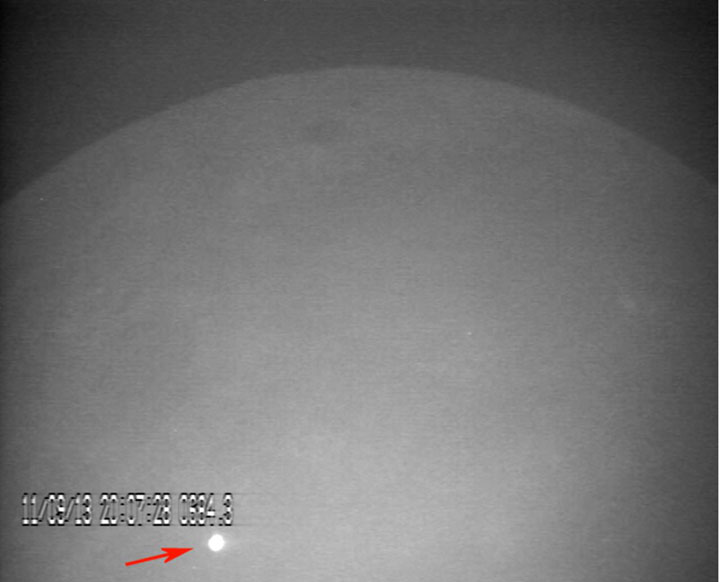TORONTO – When you look up at the surface of the moon, you might wonder why you never see meteors slamming into it anymore, creating those craters that dot its surface. But if you were looking at the moon on Sept. 11, 2013, you would have.

On Sunday, astronomers released a video of a meteorite slamming into the moon on Sept. 11, 2013. The bright impact lasted released the energy of about 15 tons of TNT. It was also the longest and brightest flash ever seen on the moon, lasting eight seconds.
The astronomers J.M. Madiedo, J.L. Ortiz, N. Morales and J. Cabrera-Caño published their findings in the Monthly Notices of the Royal Astronomical Society.
They believe that the meteorite was about a meter in diameter, weighing 400 kg. It likely created a crater around 40 meters in diameter.
The observation of the meteorite hitting the lunar surface is part of a project called Moon Impacts Detection and Analysis System (MIDAS), where astronomers try to record meteorite impacts as they hit the moon.

Get breaking National news
Unlike Earth, the moon has no real atmosphere to speak of, so nothing stops space debris from slamming mercilessly into its surface. Here at home, most often meteoroids often burn up in our atmosphere creating beautiful “shooting stars” that we can enjoy and “ooh and ahh” during meteor showers (meteors can be seen on any night, really, so long as it’s dark enough or the meteor is bright enough).
This isn’t the first time a meteorite was photographed impacting the lunar surface. Astronomers now know that the moon is struck many times a year.
Another well-documented impact occurred on March 17, 2013. At the time, the second-long result of the meteorite striking the surface was the longest and brightest astronomers had ever witnessed. It produced the energy of about five tons of TNT.







Comments